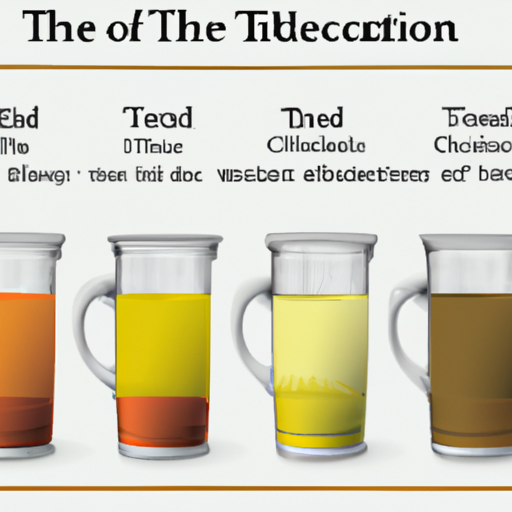The Iced Tea Evolution: Tracing the Cold History of a Hot Beverage
As the old saying goes, "Variety is the spice of life," and it seems the tea world whole-heartedly agrees. Enter iced tea, a remarkably refreshing addition to the tea family. When the temperature soars, sipping a cup of hot tea may sound less than ideal, but iced tea swoops in, offering a cooler alternative for tea enthusiasts as a bridge to warm weather bliss. The history of iced tea is intriguing, and in this post, we shall break the ice and delve into the intriguing frosty past of this summertime favorite.
Early Beginnings: The Accidental Chill
Contrary to popular belief, the idea of cold tea is not a recent invention. In fact, the origins of iced tea date back to the 1800s when some explorers and scholars were introduced to cold tea infusions during their travels to China and Japan. The Asian influence was impossible to shake off, and it wasn't long until they were sharing their exotic chilled delights with loved ones back home.
The first recorded recipe for iced tea, as luck would have it, was an accidental culinary miracle that took place at the 1904 St. Louis World's Fair. The Englishman Richard Blechynden, assigned to promote Indian tea in sweltering heat, witnessed lackluster interest in his hot tea. Desperate, he tried pouring the beverage over ice, soon creating an enjoyable cold sip that instantly attracted parched fairgoers. And thus, the official beginnings of iced tea swept the nation.
Different Iced Tea Styles: What's Your Cup of Tea?
As with hot tea, iced tea comes with a fair share of variety. From the classic Southern sweet tea to tea-rrific twists featuring fruit and herbs, there's an iced tea style for everyone. Let's take a peek at a few popular options:
| Iced Tea Style | Description |
|---|---|
| Classic Iced Tea | Typically made with loose-leaf black tea, sun tea, or cold brew tea. Can be enjoyed plain or with added sugar. |
| Southern Sweet Tea | A staple in the Southern United States, characterized by its heavily sugared black tea base. |
| Fruit-infused Iced Tea | A refreshing blend of iced tea combined with real fruit or fruit juice for a burst of flavor. |
| Herbal Iced Tea | Made with non-caffeinated herbal infusions, offering unique flavors like hibiscus, chamomile, or mint. |
| Tea Lemonade | A thirst-quenching mix of iced tea and lemonade often made with black, green, or white tea. |
| Iced Chai | A sweet and spiced cold tea beverage made with black tea, milk, and a blend of spices like cinnamon & cardamom. |
Brewing Techniques: Cold Brew vs. Hot Brew Iced Tea
Debating how to prepare a delicious cup of iced tea? There are two prominent brewing methods for iced tea: cold brewing and hot brewing. While both techniques have their pros and cons, the choice ultimately boils down (or cools off) to personal preference.
Cold Brew Iced Tea
Cold brewing iced tea involves steeping tea leaves in cold or room temperature water over an extended period, typically 6-12 hours. The results are a smooth, delicate flavor with less bitterness and astringency. Cold brew lovers find cold-infused tea more refreshing and better at preserving the tea's natural flavors.
Hot Brew Iced Tea
Hot brewing involves steeping tea in hot water for the standard steeping time (typically 3-5 minutes) and then cooling it down with ice or in the refrigerator. Hot brew proponents argue that the heat extracts more of the healthy compounds found in tea, such as antioxidants and nutrients. While the flavor can sometimes be stronger and bolder, it's a much faster method for when you want to enjoy your iced tea sooner.
Conclusion: Chill Out With an Iced Tea Twist
Iced tea, while maintaining its roots in ancient tea culture, has uniquely situated itself as the delightful cold cousin to hot tea. With an origin story as cool as its flavor, iced tea has evolved into a versatile beverage that can cater to all tastes, whether you like it sweet or unsweetened, fruity or spiced. So, next time the sun sizzles, why not take a refreshing plunge into the icy world of iced tea? Remember that no two teas are created equal; so, switch up your brewing techniques, try different flavors or even make your special blend.
Now that we've spilled the tea on the frosty history of our beloved iced beverage, we can't wait to hear from fellow tea lovers like you. What are your favorite iced tea styles or preparation methods? How do you enjoy them best: on a hot summer's day or all year round? We invite you to immerse yourself in a cold encounter with tea history, so chime in and join the conversation in the discussion area below. Bowl us over with your cool comments and inventive combinations – we're here for the steep and the chilly!
